It's that time of year when a lot of us are dreaming of getting outside, planting, and growing some edibles and ornamentals. And if you're one of those people, I have a post for you today that shows you how to set up a garden journal.
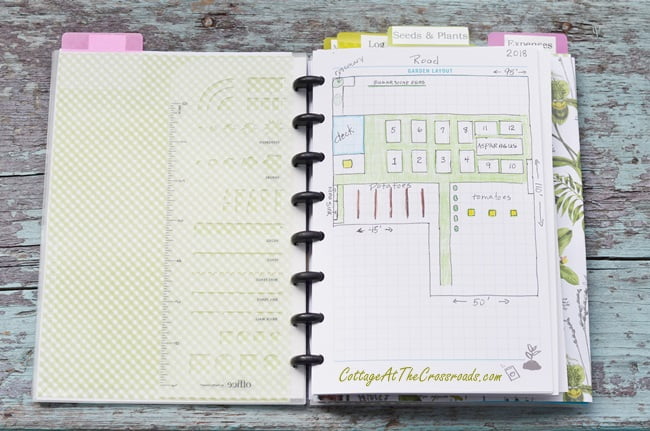
Why keep a garden journal?
The obvious reason is so we won't forget what we planted where! But more importantly, a garden journal helps you celebrate the successes as well as learn from the challenges of gardening. It also is a great record of what you do that can be shared with beginning gardeners or can become a valuable resource to the next property owner should you ever decide to sell.
So no matter if you just plan to grow a few vegetables in containers, or do a bit of flower gardening, or landscape your property with some bushes and trees, today's post about setting up a garden journal is for you.
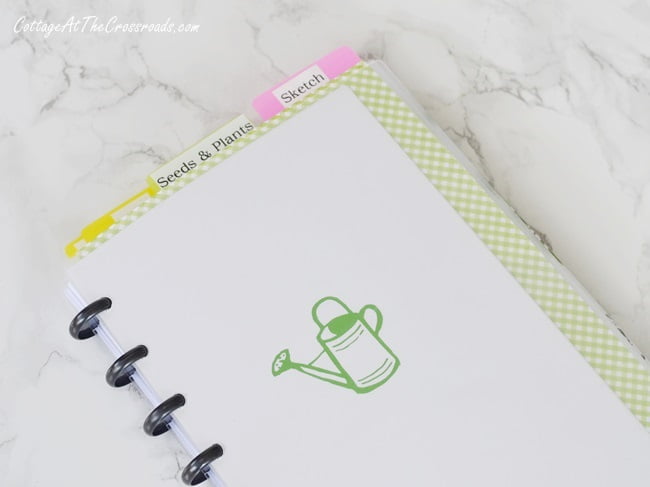
This is the perfect time to set up your garden journal. The spring gardening season is just about upon us so if you go ahead and create your garden journal, you'll be ready for the growing season.
Garden Journal Formats
There are about as many types of garden journals as there are types of gardeners! Some people keep a journal online or on their computer, but I prefer a small, hard copy that I can take out into the garden with me. Plants are not digital, nor am I.
You can use a spiral notebook, a composition book, a 3 ring mini-binder, or a commercially prepared garden journal. There are many options available for purchase online, but I like to use one that I can add pages to as I need them. The first year that we started our vegetable garden, I used a simple composition book to record what we planted and it worked very well at that time.
The journal that I'm showing in this post has a clear, durable poly discbound notebook cover with the discbound gardening insert refill. Both of those are in the junior (6 ⅜" X 8 ¾") size.
I just happen to be in love with the discbound notebook system that you can read more about HERE because they are so flexible. I can add, take out, and reposition pages as needed. But you can still follow my suggestions on how to set up a garden journal using any system or format that you prefer.
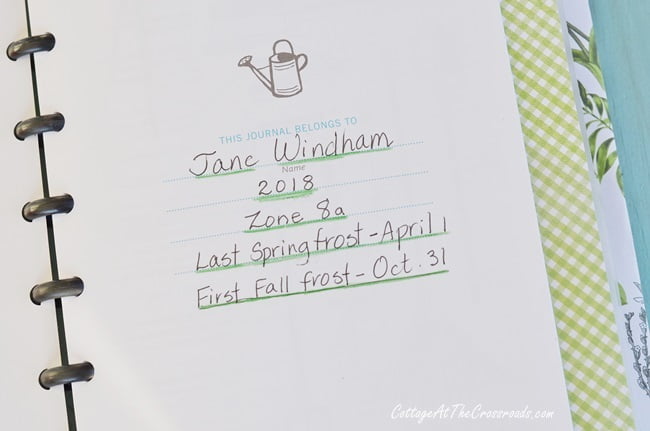
The very first thing that any type of gardener needs to know is their plant hardiness zone and their spring and fall frost dates. This crucial information is best kept in a journal for handy reference and if you notice, it's the first thing I recorded at the front of my journal.

A plant hardiness map and some additional general gardening information came in the gardening insert that I purchased, but you can find this information for your zip code HERE.
I suggest dividing your garden journal into sections. I used some tabs that I purchased at Walmart and some clear plastic divider pages with pockets.
Sections for a Garden Journal
I created the following sections in my journal: Sketch, Seeds & Plants, Log, Expenses, Calendar, and Maintenance. You may also want a section for photos of your garden so that you can record your progress. If we didn't have a blog, I would definitely print photos on sticky back paper to include in my journal!
Sketch
This aerial photo was taken by Leo's brother Jim using his drone, and as you can see, we have a very large vegetable garden here at the Crossroads. A sketch of your gardening area is very helpful for several reasons: to record the location of where things are planted, to plan for future plantings, and to determine the size/amount of what can be planted in your allotted space.
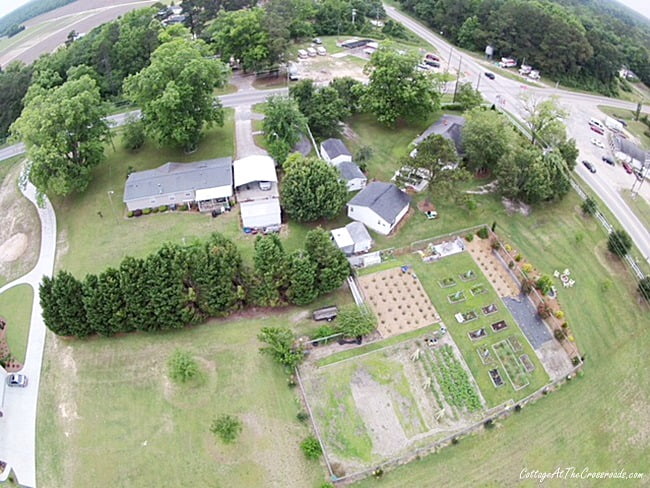
The grid paper that was included in the garden insert that I purchased was handy in helping me sketch our garden but it's not absolutely necessary. If you are a vegetable gardener, a sketch helps you plan where to put your crops in advance, especially if you are trying to be mindful of good crop rotation practices.
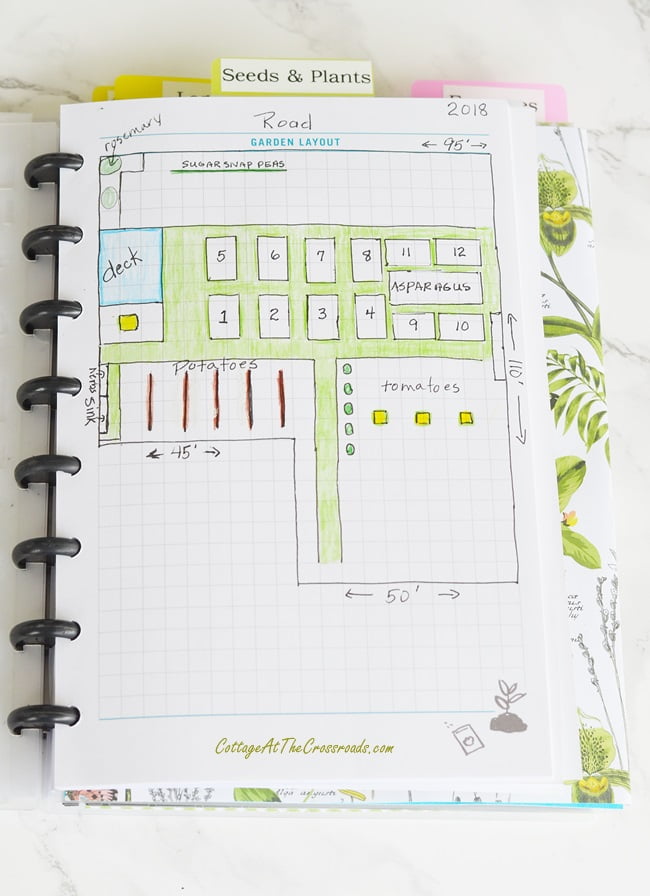
In our raised beds, we plant both seeds and transplants. In this sketch below, I am recording where we have planted both which eliminates the need for garden markers.
Whether you are using containers, raised beds, or in-ground planting, having a sketch helps you determine how many seeds or plants you need which may save you money in the long run. The space you need for each plant is easily obtained from the seed packet, the plant label, or online.
If you have never gardened before, sketching your property will help you determine your shady and sunny areas as well.
And don't forget about companion plants! I always incorporate companion plants with cucumbers as I find they thrive when paired up.
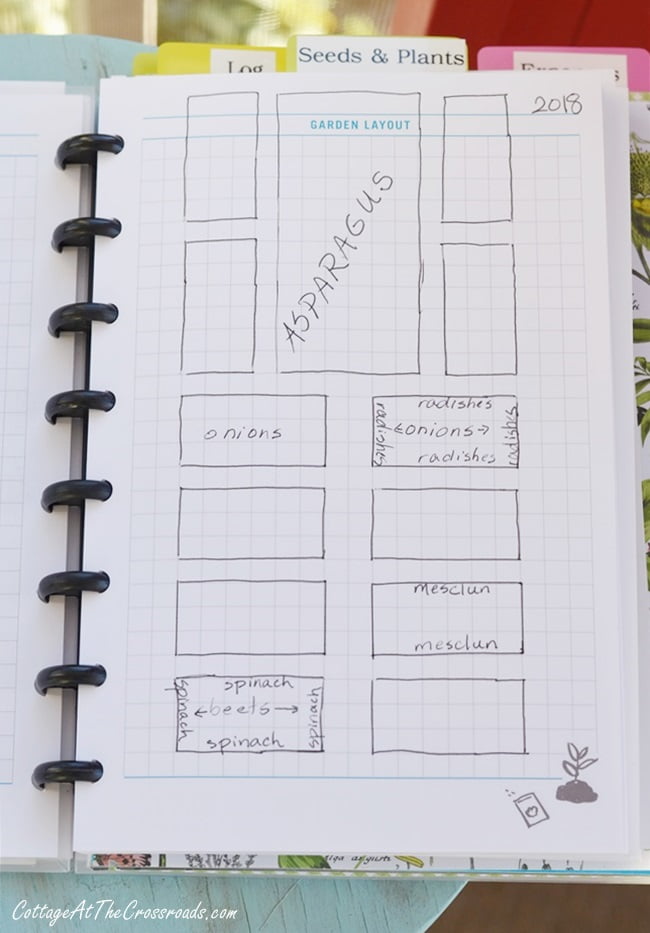
This garden sketch tool and ruler was included in the garden insert that I purchased. It came in handy but is not absolutely necessary. Check out this one if you're interested.
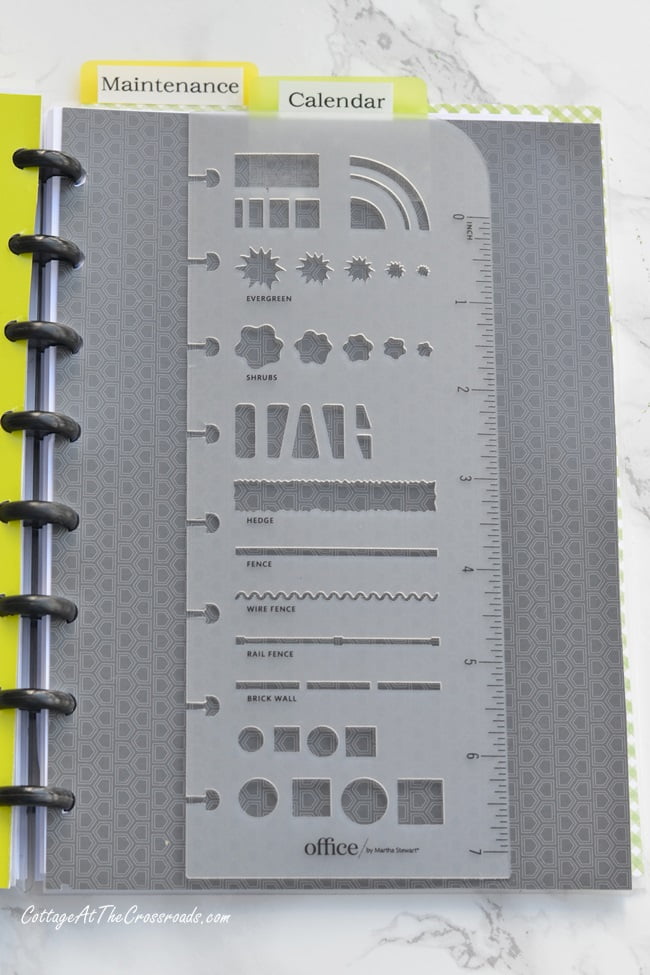
Seeds & Plants
The next section in the garden journal is seeds and plants. To create the divider page, I cut apart an old folder and used my ARC paper punch to make my own holes.
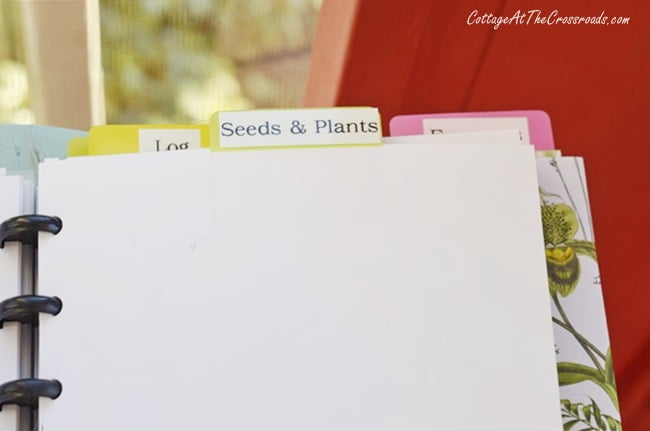
Whether you are a flower gardener or a vegetable gardener or both, you will want to make a list of seeds that you want to plant. Be sure to record the exact variety and the date when you planted them.

On several pages in the Seeds & Plants section, I have plastic pockets (that came with the garden insert that I purchased) to place seed packets. Those packets have valuable information so be sure to save them so that you will know when to harvest and what varieties grew and produced well. (You could also glue the packets into your journal but be sure to open up the packet so that you can see the info on the front and back.)
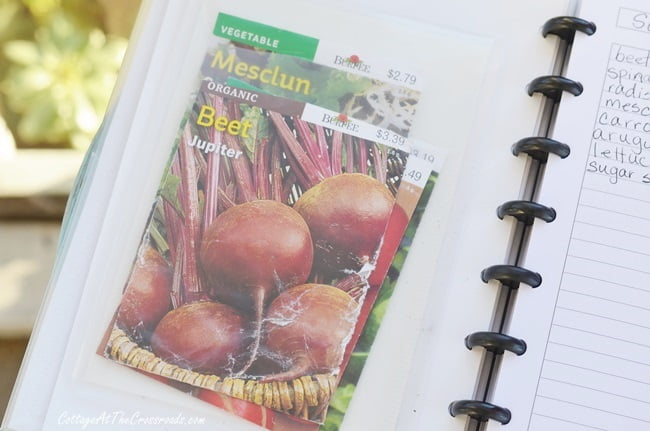
We grow a lot of our vegetables from transplants so I have a page for them. (Yes, I know, potatoes are not really transplants but they seemed to fit on this page! The point is, make your journal work for you.)
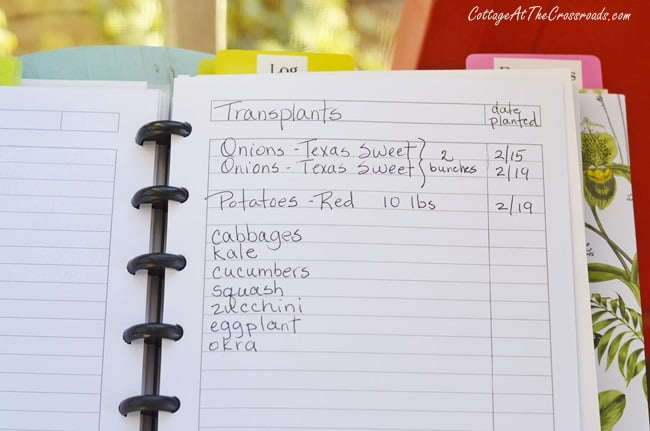
Next I created a Log section. The divider page was made by cutting up an old folder and then gluing this pretty paper onto it. The good thing about creating your own garden journal is that you can be as creative as you like.
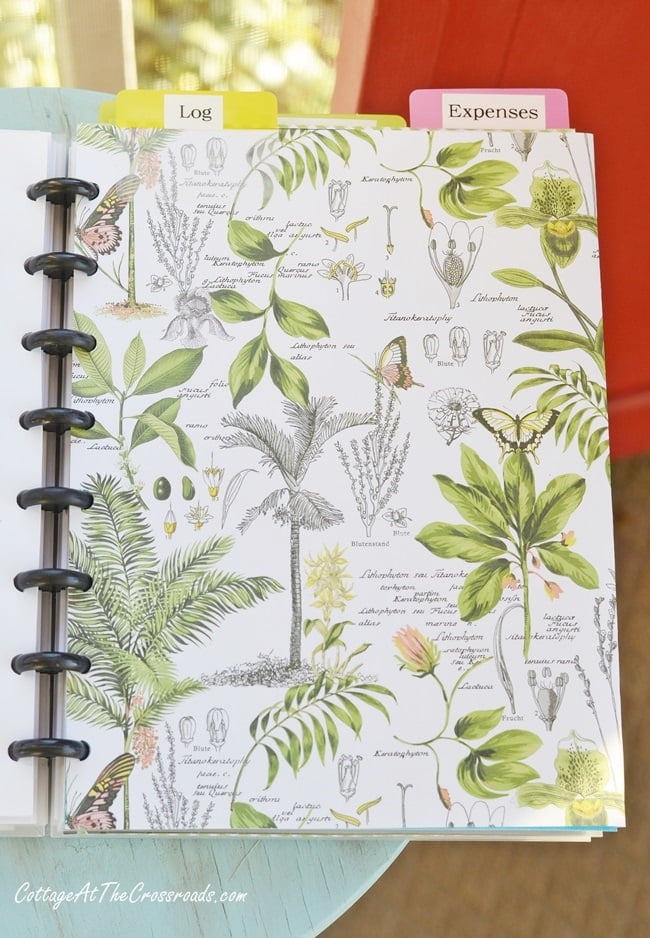
The purpose of this section is to have a running log of everything you do in your garden such as adding amendments to your soil, what fertilizer you used, weather and temperature notes, etc. It's great to take these kind of notes while you are out in your garden. If your cover is not waterproof, then just keep it in a plastic baggie for protection.
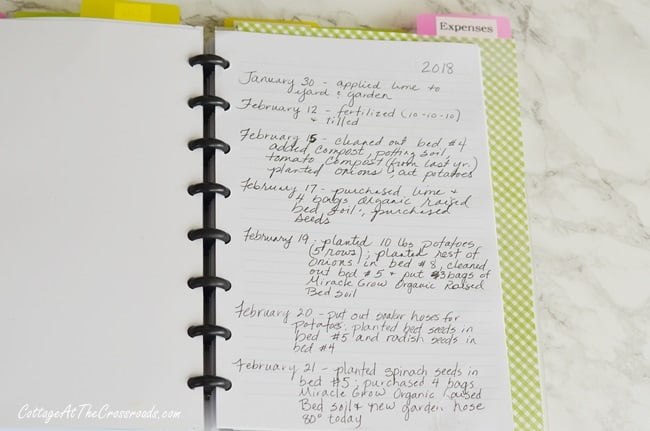
Expenses
Nobody likes to talk about money, but gardening is NOT cheap, especially if you are a first time gardener! There are tools to buy, soil amendments to purchase, construction expenses (if you're building raised beds,) seed and plant costs, etc.
However, with produce costs rising for everyone, everywhere. There is no better time to start gardening and growing the basics like tomatoes and cucumbers to name a few.
You can't see it is the photo below, but this divider page has a pocket for receipts.
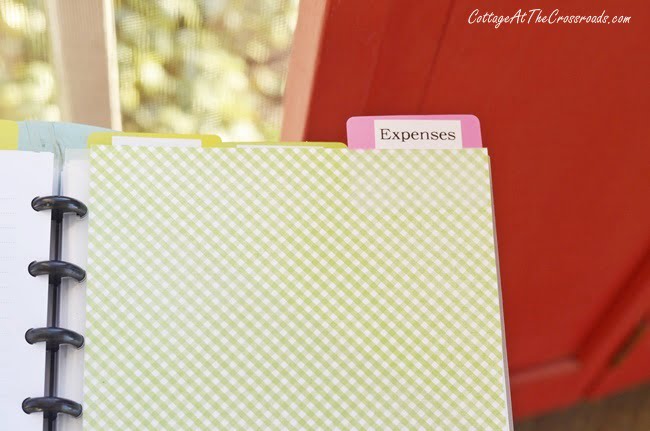
And the garden insert that I purchased came with these paper pockets that I glued down onto some of the pages in this section.

Keeping receipts helps you determine if your gardening efforts are worth it, especially if you are growing your own food. But can you really put a price on the taste of homegrown food? Or the health benefits? I say no.
Calendar
I included a calendar section in my journal. I used a preprinted one that fits into the discbound junior size notebook, but you could easily print off some calendar pages and glue them inside your journal. Using the information on seed packets or plant labels, you can calculate your harvest dates and put them on your calendar. Looks like I'm going to be making lots of fresh salads in March!
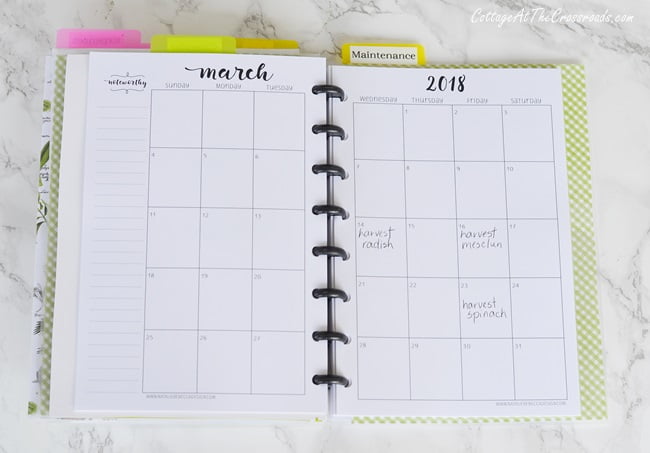
Maintenance
Last, but not least, is the maintenance section. This is where you will make notes about all the things that it takes to have a successful garden: weeding, watering, fertilizing, controlling pests, harvesting, etc. For example, here is my page for weeding. This is where I would identify what kind of weeds I have and what I used to control or eradicate them. This is good information, especially if you're using homemade or organic solutions, and you can note whether they worked or not.
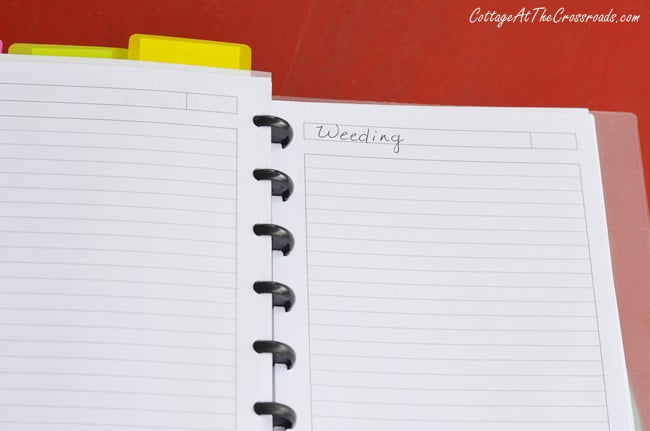
My post on how to control the weeds in your vegetable garden is a great resource for continued learning.
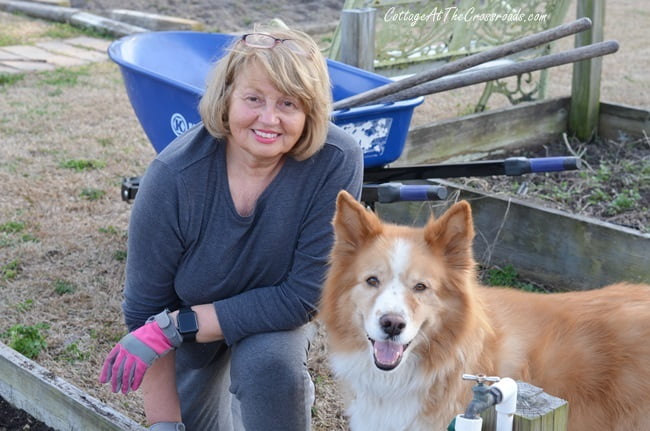
Keeping a Garden Journal
Keeping a garden journal is part of the whole gardening process. It's a place to keep records, plans, notes, and anything that relates to your garden. It documents your successes and helps you learn from your mistakes. You'll find yourself referring to it from year to year with a sense of achievement and satisfaction.
If you've gotten some ideas from this post about how to set up a garden journal, do me a favor and pin this to help others who may need some direction, too!
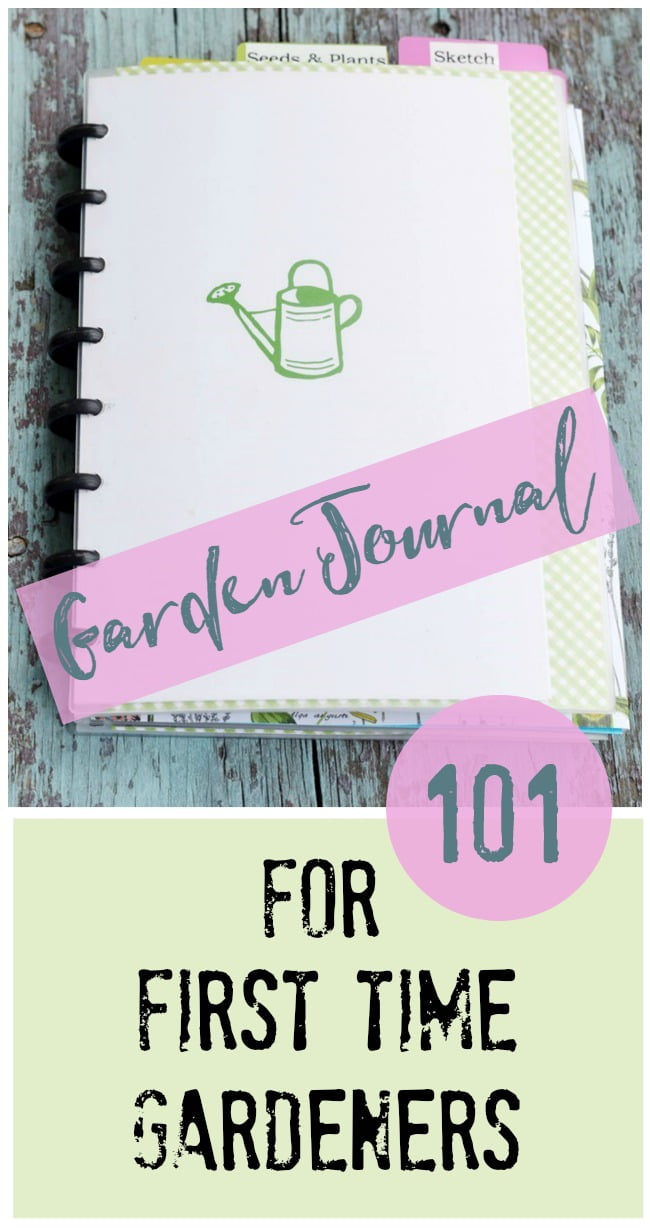
Thanks a bunch! Enjoy planning your garden while we wait for the arrival of spring!

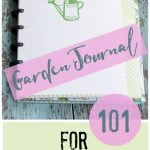
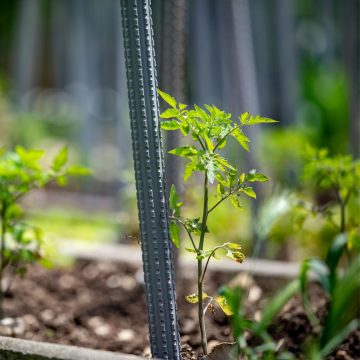
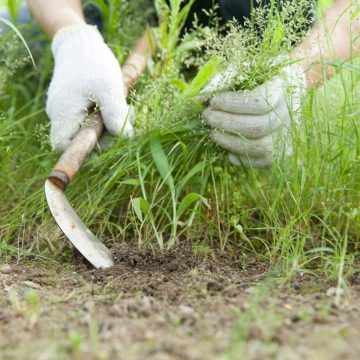
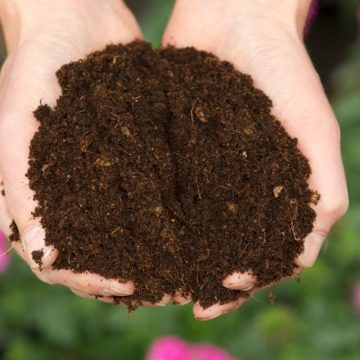
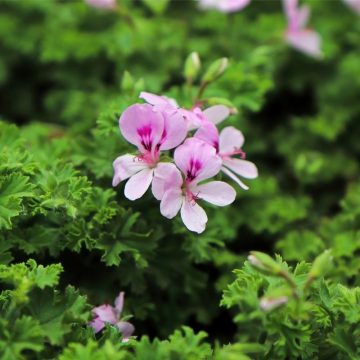
Pattie
Hi Jane,
I can't find the journal inserts you show in the post. Do you have a link? I really like the way you set up your journal and would love to do this for my garden. Just need help in finding all the goodies.
TIA
Pattie
Jane Windham
Pattie, the Martha Stewart gardening inserts are out of stock at this time. You could always create something similar using other materials.
Cathy Horton
Thank you Jane for the step by step instructions! This is my first garden journal and I love it! We bought a house with lots of different flowers, evergreens and shrubs. This helps me keep up with what is blooming and when. I am using the discbound notebook with the gardening inserts from Martha Stewart. I didn't purchase the tool, but printed out some pretty floral pages from some of my old scrapbook papers. The discbound papers printed off just fine!
Allison
Hi there! Thank you so much for this post. It is the most useful resource I've found as I realized I needed a journal and there are so many options out there! I just wanted to mention that the link you provided to the Martha Stewart gardening insert has changed.
Jane Windham
Thanks for pointing that out, Allison. The correct link is now in the post.
Christie B.
Thank you so much for the wealth of information you shared! I am just getting started and was really looking for a way to keep everything organized. Your zone is also very similar to mine as I am in 8b, so I will be combing your blog for other helpful tips and advice!
Linda Whitworth-Reed
I’m new to gardening for food. Thanks for your inspiring insights into creating a gardening journal of my own. I look forward to following your posts. Blessings.
Doreen
Thanks and greetings from The Netherlands, Amsterdam 🙂
Becky G.
Thanks so much for this! I am in my second year of gardening, and I wish I had taken better notes from my first year! This is perfect for me!
Nancy Lopez-Ibanez
Dear Jane, WHERE can I find/purchase the plastic insert for use with drawing my garden items..i.e,,
hedges, fences etc,?
Love the way you have designed this journal...would work just GREAT for me!! Thanks so much,
Lin Distel
Your journal descriptions are some of the best I've found. I ended up getting the Arc junior notebook, some dividers and the MS garden packet to go in it. Will see what else to add when I back track it to earlier this fall. I didn't know how to link it so you got some credit.
Thank you!
Jane Windham
That's quite alright, Lin! Don't worry about that!
Laura
Love your beautiful garden journal! Thanks for sharing each section and giving photo examples. I have gardened for years and have some records, but I really want to have a better system, something more organized and easy to access. I am thinking of a 3 ring binder or a composition book, but I do love the disc notebooks and wonder if I would love that even more... going to get things together one way or the other and start documenting from here on out!
Jane Windham
I'm glad that I gave you some inspiration for starting a journal! It's a great way to refer back to the varieties you planted.
Tina
Do you begin a new journal every year? Or do you just add to each section year after year? Or do you recreate these sections in the same journal for the following year? Sorry for all the questions, but I want to plan my journal accordingly.
Jane Windham
I like to organize my journals by years.
Linda
I grew up on these recipes. To me, they are comfort food. The sugar creaM pIe can alSo be made With buttermilk, adding a little melted butter , an egg, and vaNilla. The necessity of making every scrap count teaches a deeper respect for food and the love that goes into making it enough. Thank you for doing what you caN to keep these traditions and this american hardiness alive.
Jean Windham
Great information Jane. Thanks for sharing.....Jean
Diane
I love seeing how you journal your garden. So many great ideas, tips, and suggestions, Jane. Someday I'll do this! 😉 So much better than keeping it all in your head, which I do. LOL
yify
I have read your article. It is very informative and helpful for me.I admire the valuable information you offer in your articles. Thanks for posting it!
Jane Windham
Thanks! Anything to help people get growing!
Sandy
Very interesting post. I love to keep up with things, but have never been as organized as this.
Jane Windham
Sandy, some years are better for me as well! This year I plan to stay on top of entering info in the journal.
Elaine
I am not at all artistic - cannot even draw a good stick person. 🙂 But I do have a garden journal. I used a 3 ring binder and plastic page protectors. On a sheet of notebook paper, I tape the tag (and receipt) from the plant. I then write the name at the top and list all the information about the plant, including where it' planted, water, light, & other needs. When to prune and the date. And anything thing else I think I might want to remember. It's not fancy or even very pretty, but it works well. Oh, I also named my different garden areas to easily identify where I planted things. I have a patio garden, herb garden, pool garden, flower garden, woodland garden and retreat garden.
Jane Windham
That's pretty much what I did the first year, Elaine. I'm so glad I have those tags from the plants that we put into our bed in front of the garden. Making notes about when to prune is such a good idea.
Mona
Thanks, Jane, for sharing your journal. So helpful and am going to try to develop one for us.
Jane Windham
Thanks Mona! If I don't keep a journal, I just can't remember from year to year what was planted in each area.
Patti @ Pandora's Box
WOW - what a garden!! Sadly I hate to garden, hate the dirt, bugs, little slithery snakes, and so on!! I just need a gardener so I can reap the benefits!!
Jane Windham
In all of our years of gardening, I've only seen one snake! Luckily, he was already dead so I didn't have to change my clothes afterward!